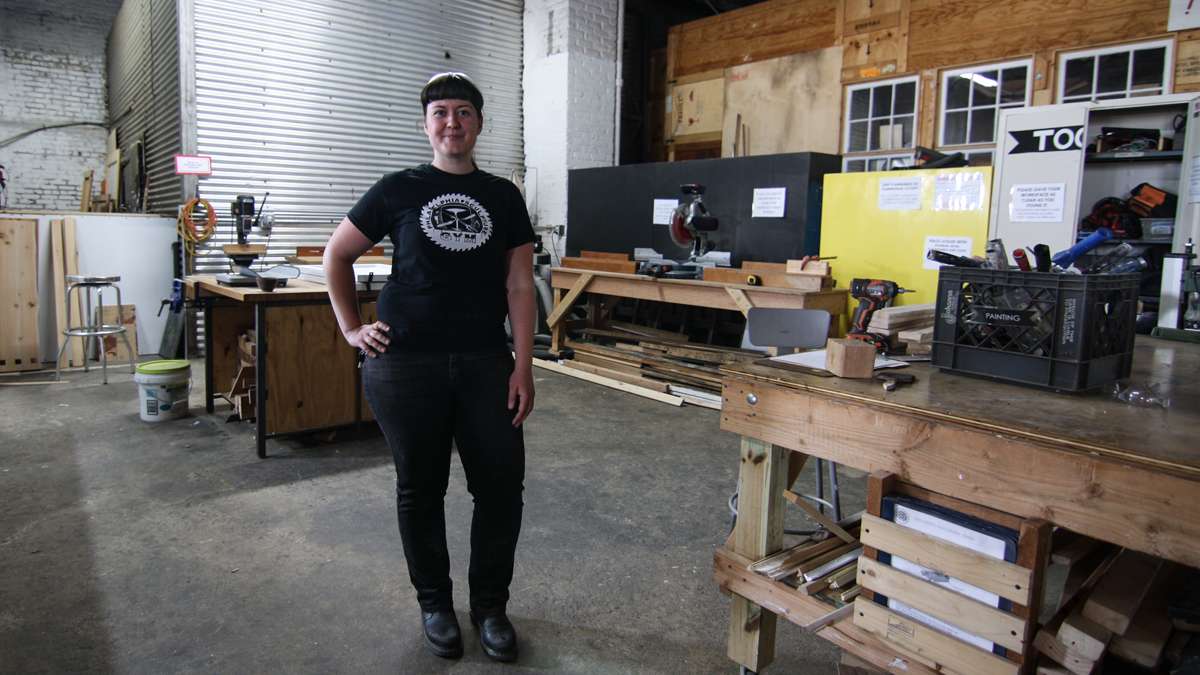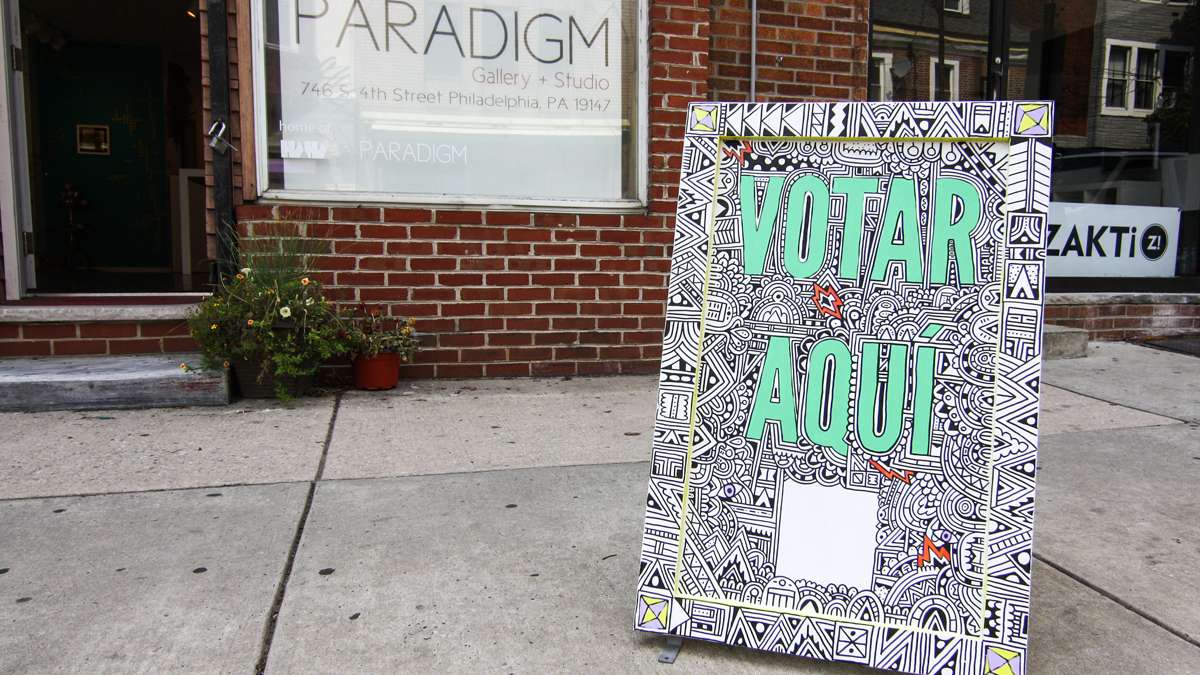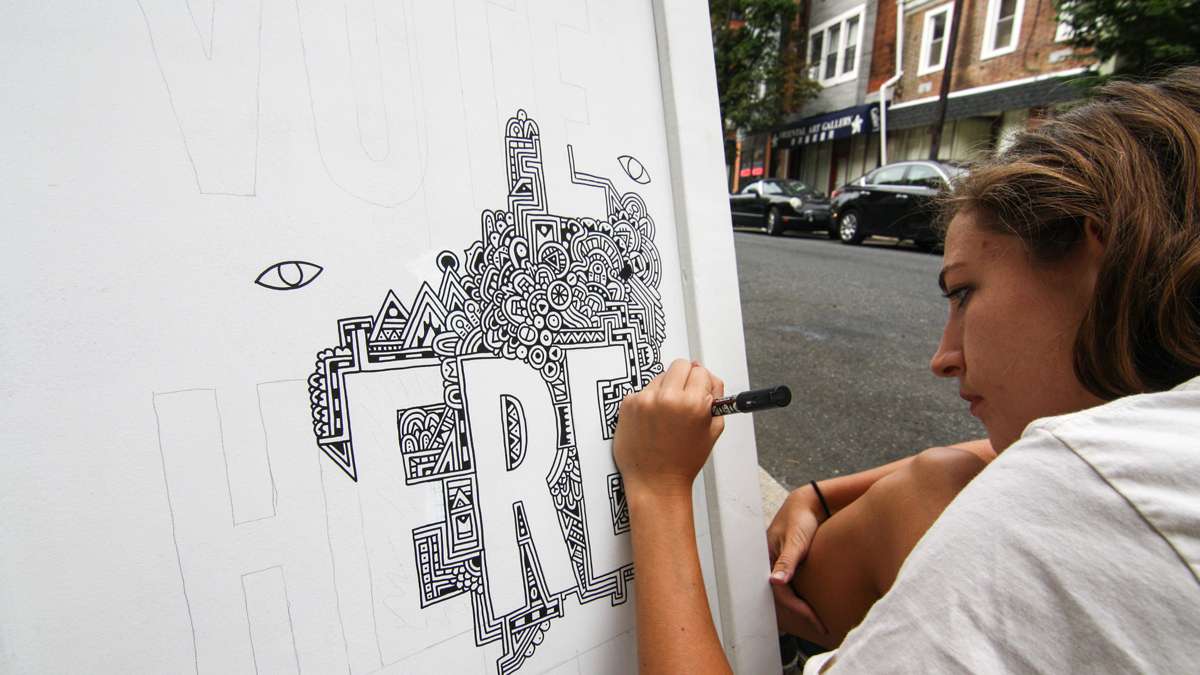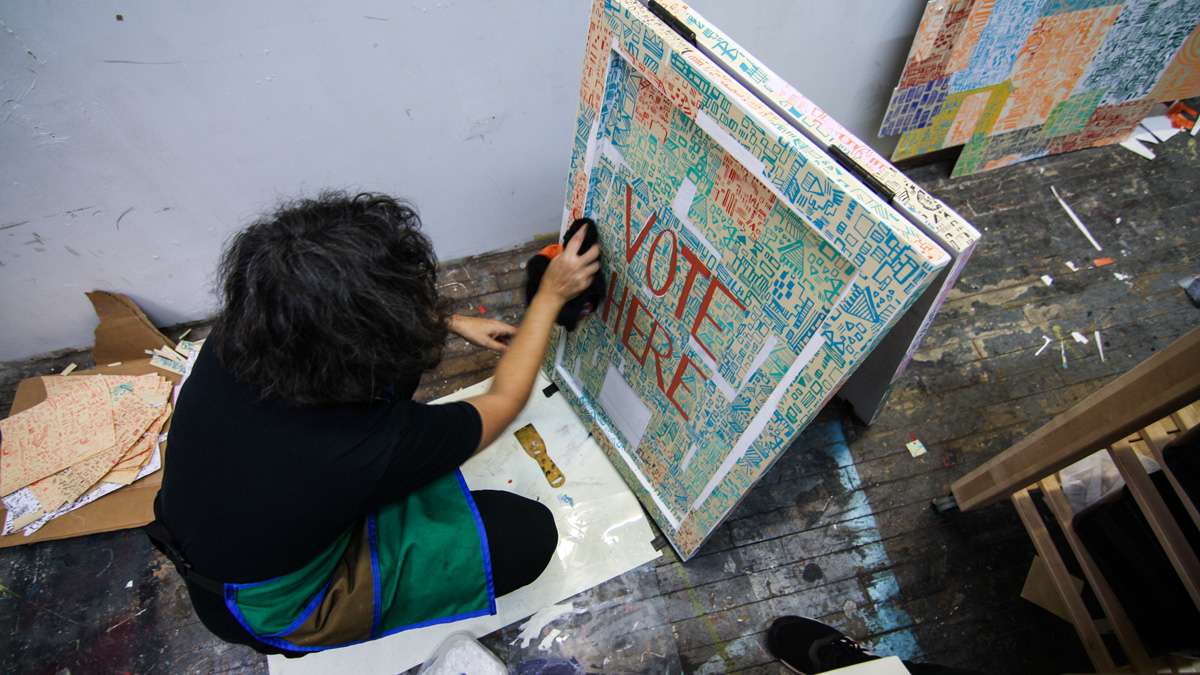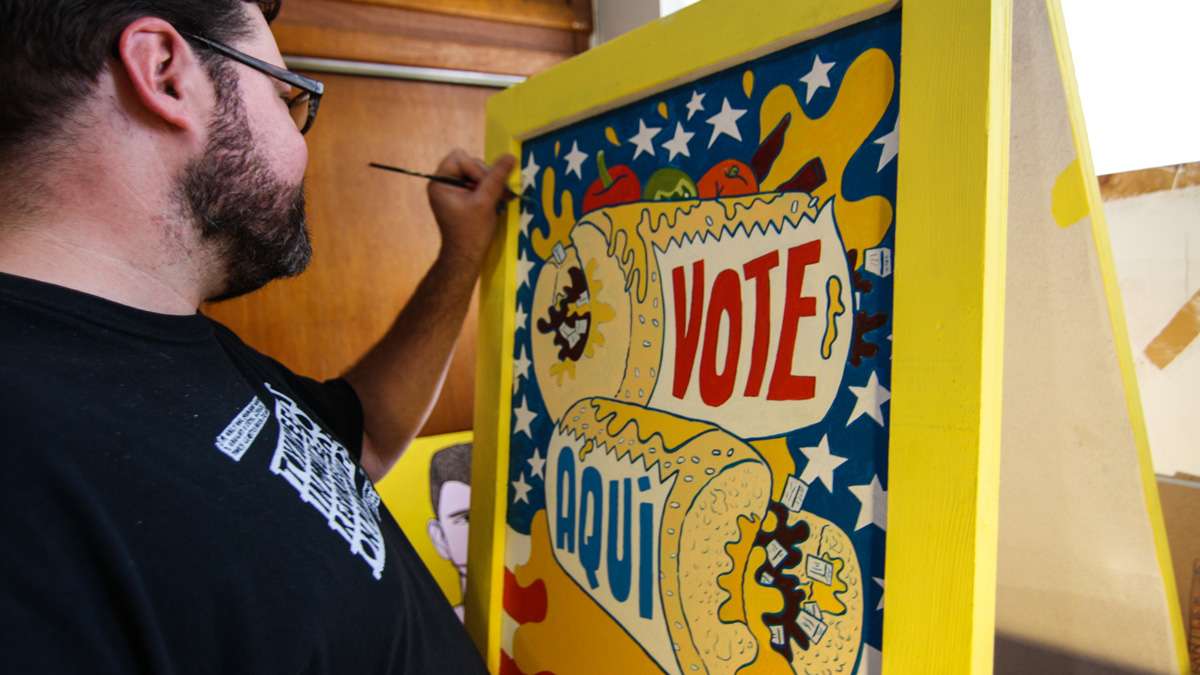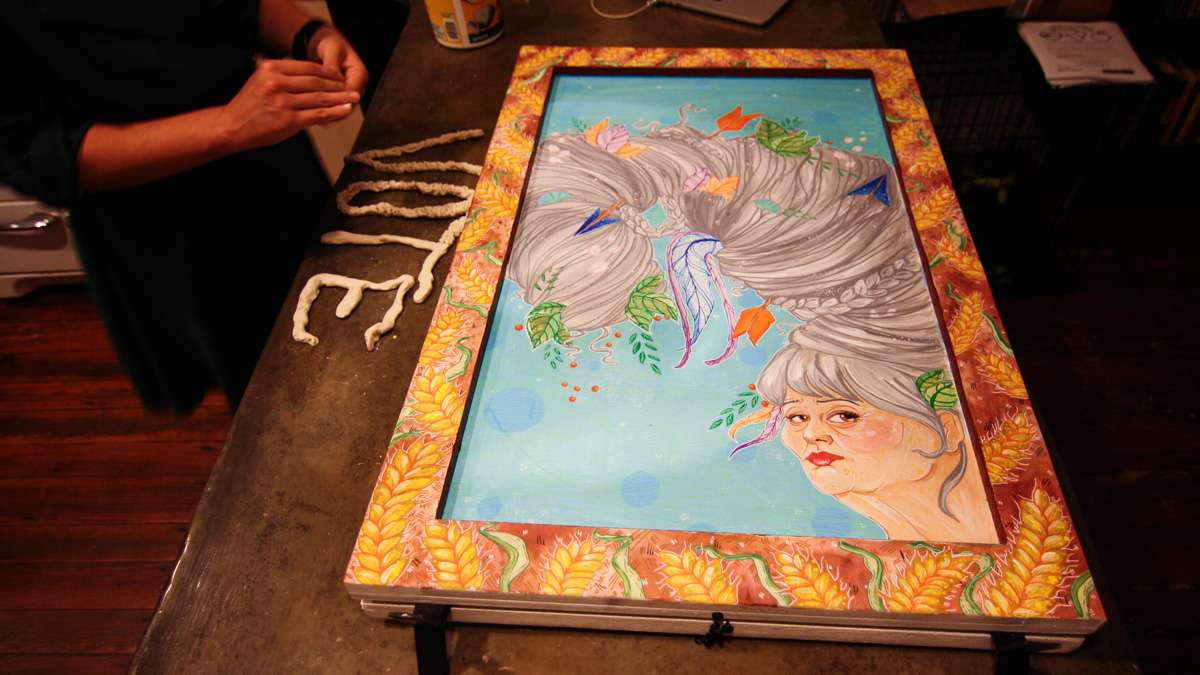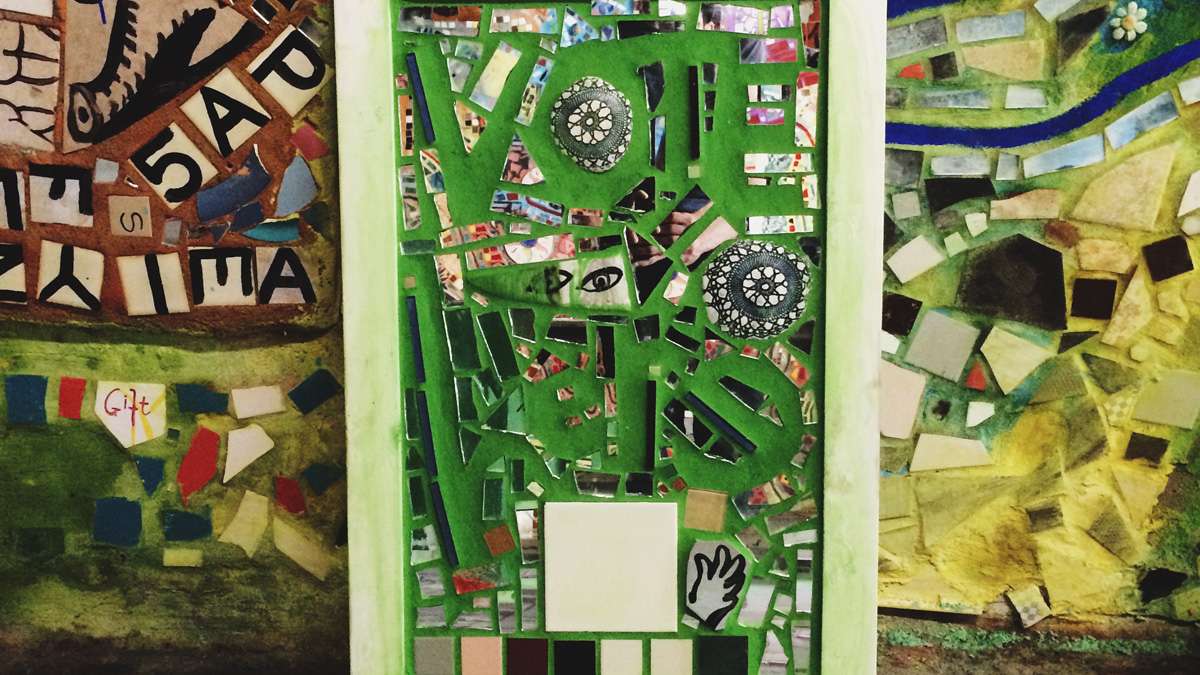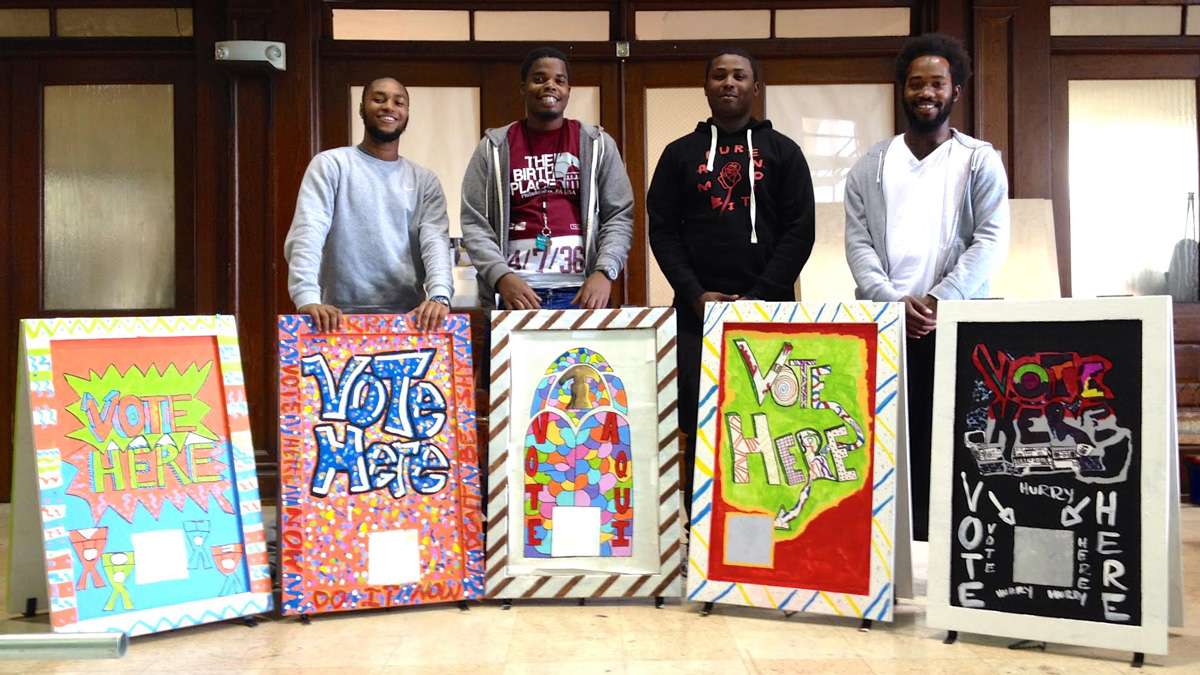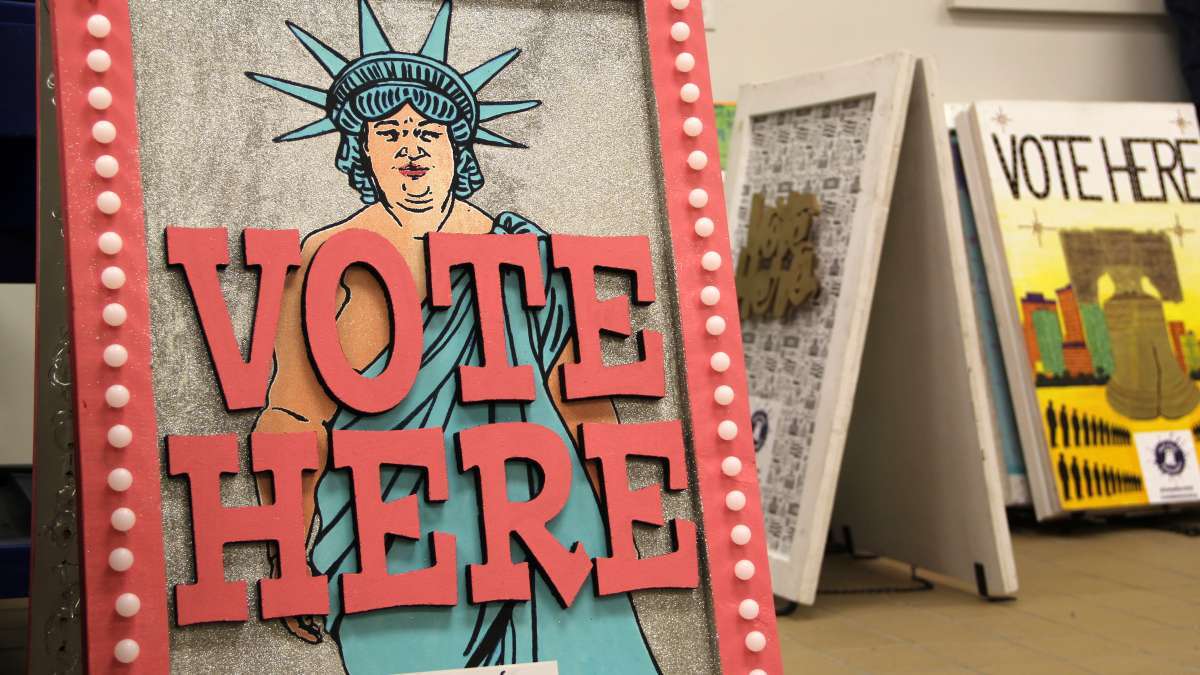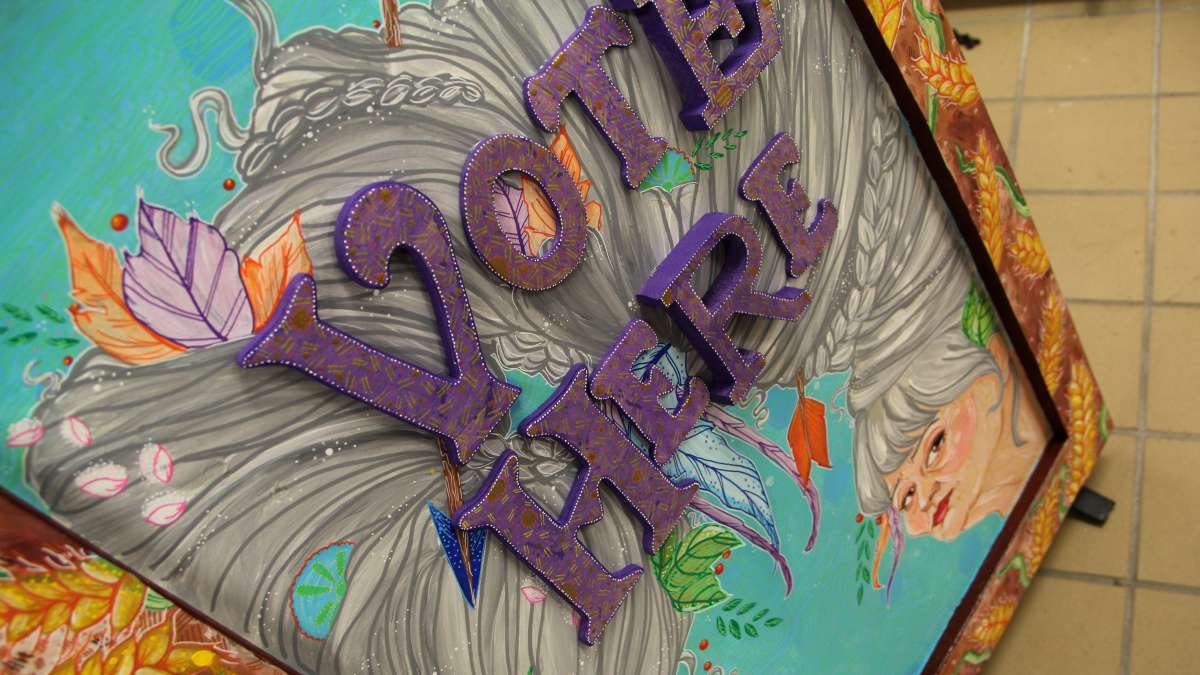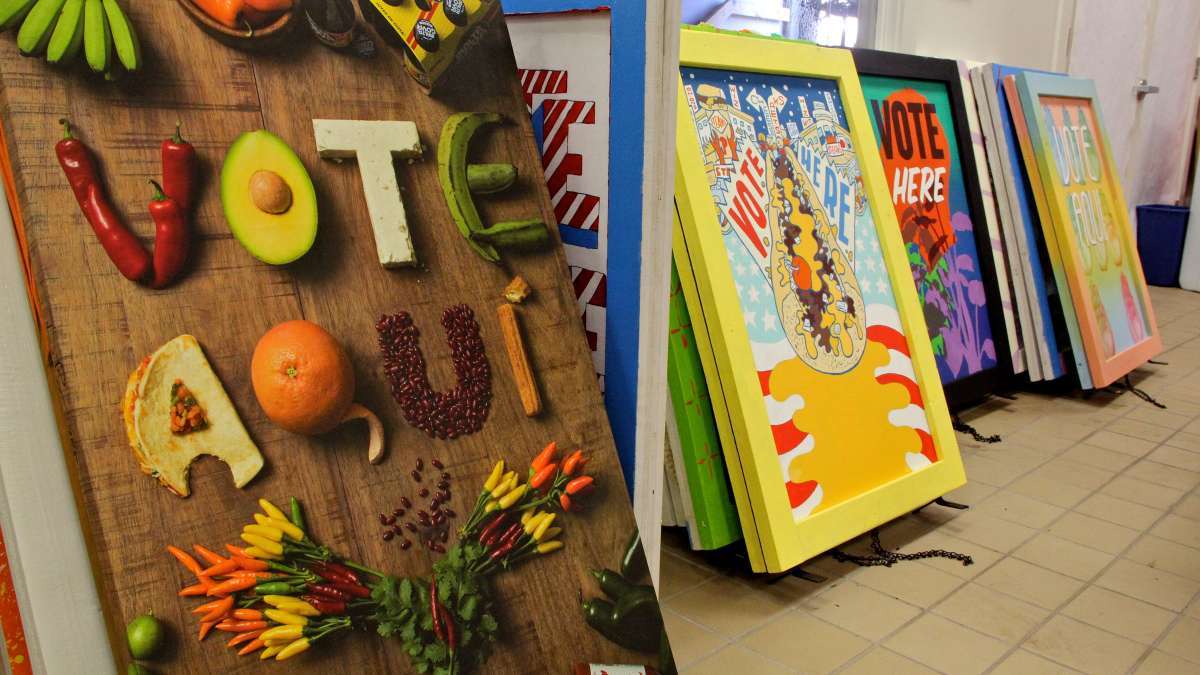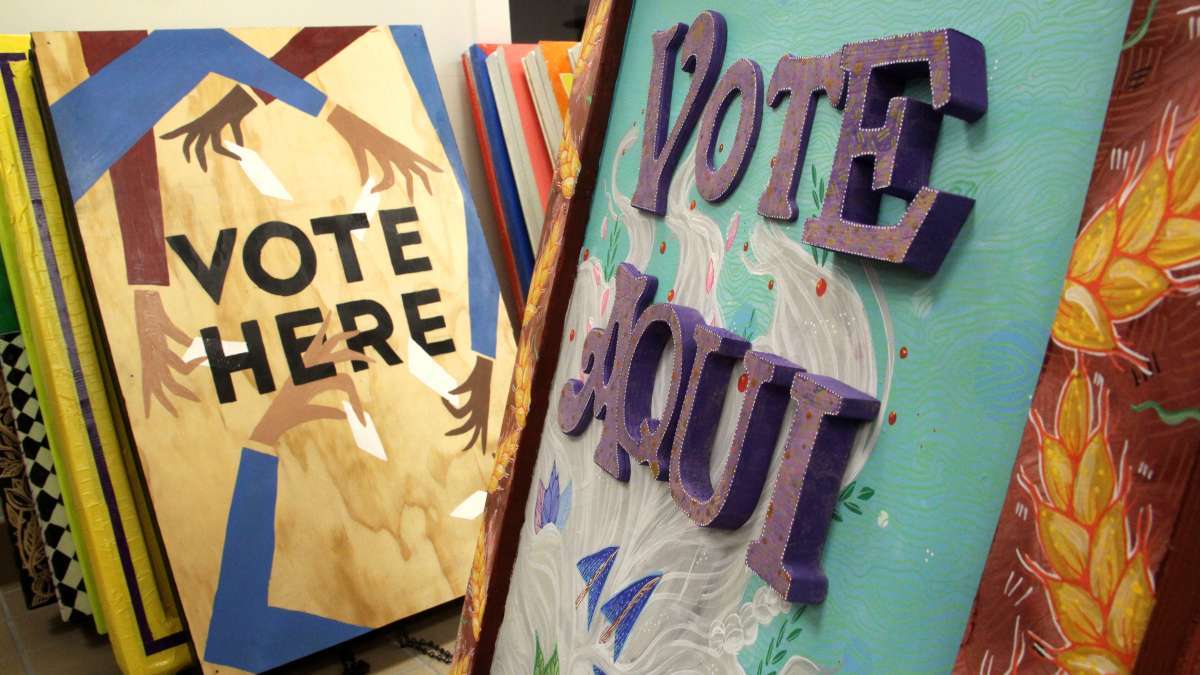Did Next Stop Democracy’s public art inspire more voters? Sort of.
A recent experiment to see whether public art could boost Philadelphia’s dismal voter turnout may have been inconclusive, but it did reinforce something I think we all understand about civic engagement: Those who get involved in the election process are more likely to vote.
Next Stop Democracy, a project started by marketing firm Here’s My Chance, commissioned 60 Philadelphia artists to create new “Vote here” and “Vote aqui” signs. They were stationed in triplets near 20 polling places around the city for the Nov. 3, 2015, general election.
Researchers from the University of Pennsylvania studied their visibility and impact by surveying voters at the art-enhanced sites and 20 control sites without the fancy new signs. On Tuesday evening, the Philadelphia Citizen and Here’s My Chance hosted “Defibrillating Democracy,” where they revealed the results of the experiment
Drum roll
The researchers found that, from 2011 to 2015, voter turnout indeed increased by about 44 percent in polling places that had signs. They also found that voter turnout increased by a similar percentage in polling places that did not have signs. In short, there was no evidence to suggest that the signs had a direct influence on voter turnout.
Womp womp.
Perhaps not a huge surprise. People who got close enough to see the signs were probably on their way to vote anyway. At best, the signs may have enhanced the experience. And indeed, voters reported that the signs made them feel more welcome. And three of four voters who saw the signs said they liked them.
But there’s good news!
The researchers discovered that the artists themselves benefited from creating the signs. They said they were more likely to vote as a result, and nearly all of them said that the experience made them more likely to talk to other people about the election.
It makes sense. Artists have an interest in promoting their work. But beyond that, it stands to reason that being a part of a public art project dedicated to the simple act of voting — that tactile experience of creating something physical and permanent and lovely and thoughtful — just gets people energized about the process.
What did you do at work today?
Oh, I made this really dope sign. Yeah, it’s for this voting project.
Wait … voting? Voting for what?
What do you mean? We’re electing a mayor. Like, together.
Aw, sweet. … And that sign really is super cute. Is that jawn covered in yarn?
Yep. And thanks! So … where do you stand on Kenney’s proposal to end stop-and-frisk?
Dude, don’t get me started.
It’s also smart. Philadelphia’s artists are connectors. They have networks and fans and Instagram. And people are far more likely to vote if they know their friends and neighbors are doing it.
As we approach the 2016 presidential (and, don’t forget, congressional!) election, how interesting it would be if we could get more folks to get their hands dirty, show them an open door to the process, remind them of the issues at stake — and see if they’re inspired to spread the word.
There are plenty of ways to play with the idea. The Defibrillating Democracy organizers invited other voter advocates to talk about their own efforts to stimulate the voting base.
Grace Ramsey of FairVote talked about the advantages of ranked-choice voting, that is voting by ranking candidates in order, creating an “instant runoff” that selects a candidate who reflects the support of a majority of voters (even if she or he is not everyone’s No. 1 favorite).
Sam Novey from the Foundation for Civic Leadership talked about the National Student Voter Challenge, which relies on a sense of prestige-competition among colleges to engage students and administrators.
Roxanne Patel Shepelavy of the Citizen discussed the results of the publication’s 2015 voting lottery. Whether you loved or the hated the concept, polling found that 30 percent of voters knew about the lottery and that turnout was 5 percent higher in that group.
—
CORRECTION: An earlier version of this commentary stated that the Annenberg Public Policy Center conducted research for Next Stop Democracy. The research was not done under the auspices of the APPC, but the researchers were from the University of Pennsylvania. And Sam Novey is the director of voter contact innovation at the Foundation for Civic Leadership; he is no longer working with TurboVote.
WHYY is your source for fact-based, in-depth journalism and information. As a nonprofit organization, we rely on financial support from readers like you. Please give today.



